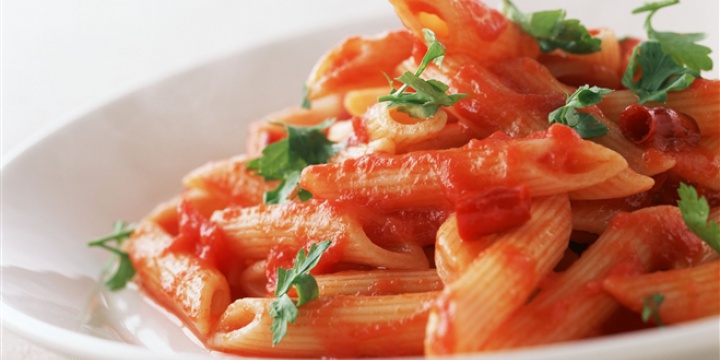Pasta is rich in important nutritional elements and is easily
digestible. However, to preserve those characteristics it must cook
evenly from the outside in, without leaving any parts uncooked and must
not lose its nutritional substances in the water whilst cooking.
The characteristics of Granoro pasta are its smell, perfect
thickness, intense yellow colour, delicate flavour, elasticity and
consistency after cooking
Pasta Is Good Quality When:
- it has the right thickness, allowing it to cook evenly and in the right amount of time, which should not be too long;
- it remains compact, strong and elastic, that is to say al dente, even many hours AFTER it has been cooked;
- it cooks evenly from the outside in, without leaving any raw parts
(which are often confused with the characteristic of being al dente) and
there is no starchy film on the surface of the cooked pasta;
- the cooking water remains as clear as possible (when the cooking
time is long, pasta loses starch, vitamins and proteins in the water);
- during mastication, it is elastic and has a good consistency, which
are the true characteristics that make pasta al dente. Elasticity is
obtained when the gluten is of good quality (this depends on the use of
good quality semolina) and if the drying process has been performed at
the right temperature;
- it is porous. Porosity is what allows each piece of pasta to absorb
water evenly, from the outside in, doubling in volume but cooking
perfectly. These characteristics also depend on the drying process
employed: if it is moderate and therefore performed at the right
temperature, the surface of the pasta will not become plasticized but
will remain porous, allowing it to absorb water. If dried at very high
temperatures (very common today in Italian and international pasta
factories, because it halves production times and costs) the outside of
the pasta will be subject to “plasticization”, resulting in longer
cooking times and uneven cooking; it will remain raw in the middle and
therefore less digestible. However, pasta is loved because it is easy to
digest and suitable for many consumers;
- the colour is a warm, bright yellow, both before and after cooking.
One of the essential requirements for semolina to be judged of good
quality is the yellow index, a parameter from the Lab colour scale,
which should not be less than 24.
The Characteristics Of Granoro Pasta
The characteristics of Granoro pasta are its smell, thickness,
intense yellow colour, delicate flavour, elasticity and consistency
after cooking (even after many hours).
These characteristics are typical of the finest pasta and are summarised by the concept of pasta being al dente.
The high quality of Granoro pasta is guaranteed by careful selection of
the durum wheat semolina (obtained only from the heart of the wheat
grain), strict controls performed during the entire production process
and the pasta-making methods, of which the Mastromauro family have an
in-depth knowledge. It also cooks evenly from the outside in and once
cooked is al dente, maintaining body and firmness even if left on the
plate for a few hours.
Long cooking times are not an indication of quality, but are simply
caused by the increased thickness of the pasta, produced using dies
purposely designed to produce thicker pasta shapes. However, when pasta
shapes with greater thicknesses and therefore very long cooking times
are cooked, they remain overcooked on the outside, partially raw in the
middle and will be coated with a sticky, starchy film.
